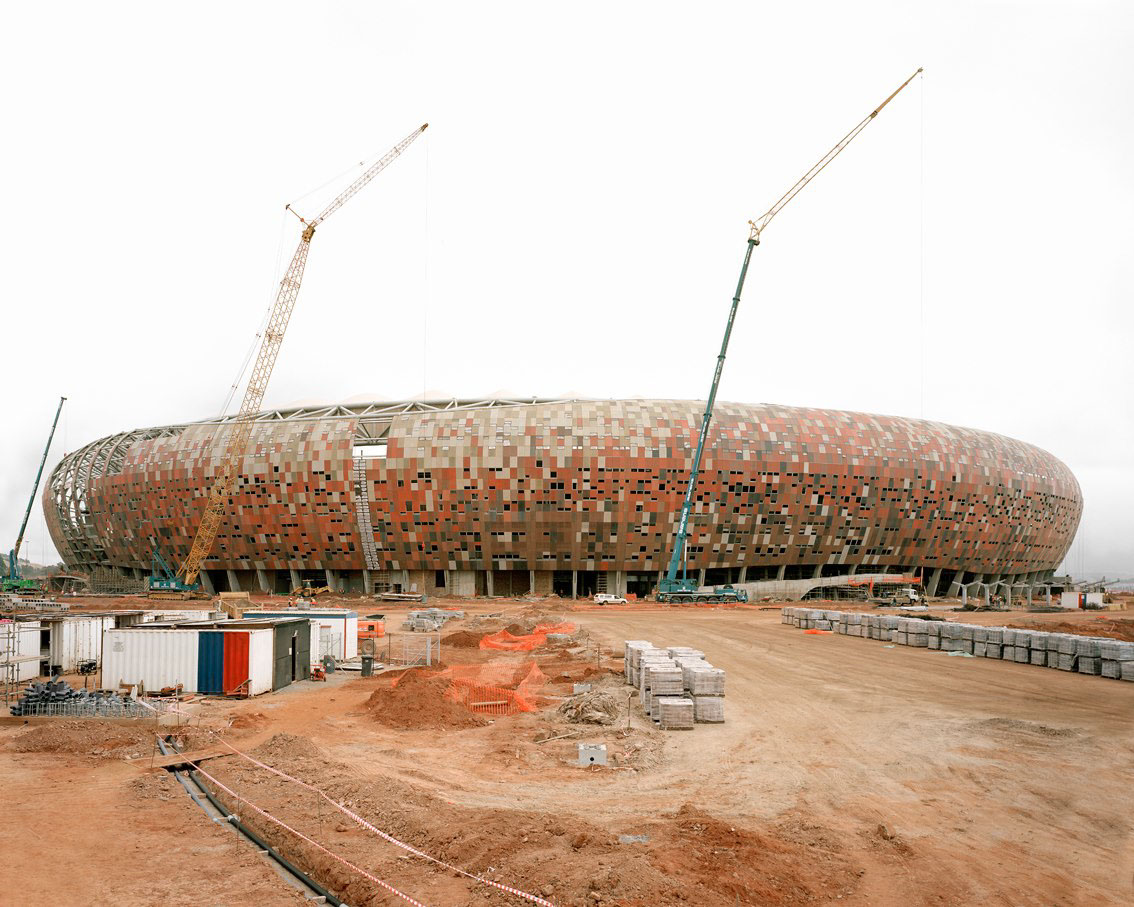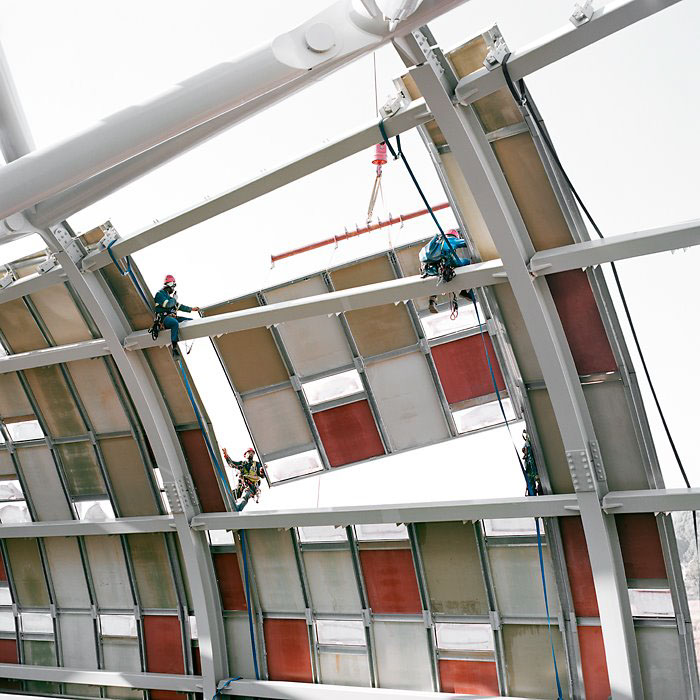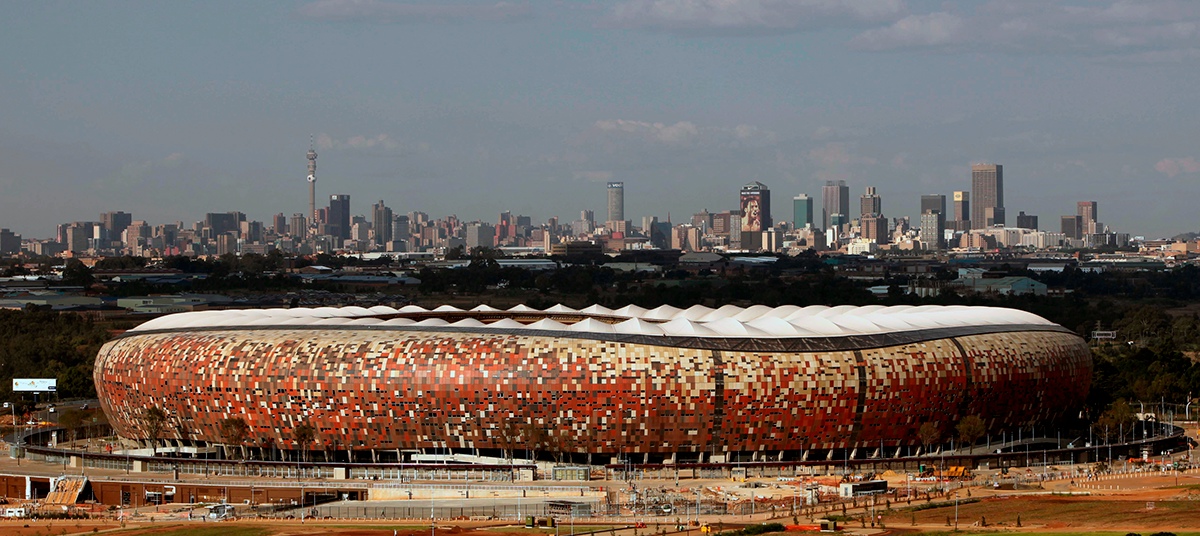
The icon of the FIFA World Cup 2010 – the Soccer City Stadium - hosted the opening and the final matches. The Austrian company Rieder Smart Elements made a significant contribution to the construction of the world cup stadium in Africa by realising the glassfibre reinforced concrete façade in native African colours. 30.000 m² fibreC panels in typical african colours (sandstone, terra, mocca brown, terracotta, haima red, sahara…) were installed.The fibreC cladding promotes the Soccer City Stadium’s eco-responsible construction by using less material and extending building life.
The event was intended to represent the flair and culture of the African continent. Nothing does it better than the football stadium itself, designed by the South African architecture bureau Boogertman Urban Edge & Partners. The outer skin of the stadium, realised with glassfibre concrete, refers to the calabash, a traditional African drinking vessel. In line with the architects’ wishes, the calabash-shaped shell owes its beauty and authentic colours to panelling produced by Rieder Smart Elements, the manufacturer of fibreC, a natural cladding that features glassfibre concrete.
The sustainably built, newly redesigned stadium features fibreC concrete, which reduce the weight and thickness of the concrete needed by 10 times compared to conventional panels; enhance building life and durability with their resistance to corrosion, fire, and UV light and temperature variations; and are 100 percent recyclable.
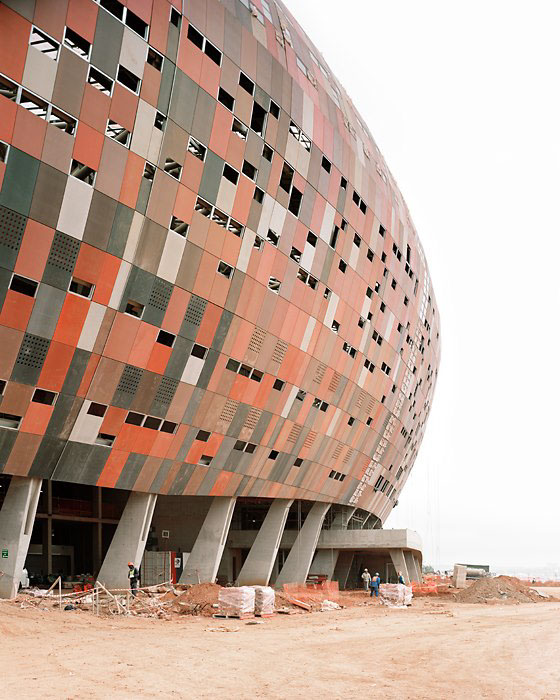
The stadium’s impressive envelope is divided into a roof section, consisting of transparent polycarbonate elements, and a façade covered in fibreC glassfibre concrete. Most fibreC panels measures 1.2 x 1.8 m and is only 13 mm thick. The shell includes more than 2100 modules, each composed of 16 fibreC panels. The modules were assembled in a field factory on site. Rieder Smart Elements’ fibreC panels withstand all weather conditions, conform to the strictest fire-protection requirements and excel in durability.
The excellent eco-profile of fibreC panels indicates a global-warming potential that is 40 per cent lower than that of fibre-cement cladding or aluminium panelling. The use of high pressure laminates (HPLs) would require five times more energy than fibreC, which is listed in the GreenSpec Directory as an environmentally preferable product.
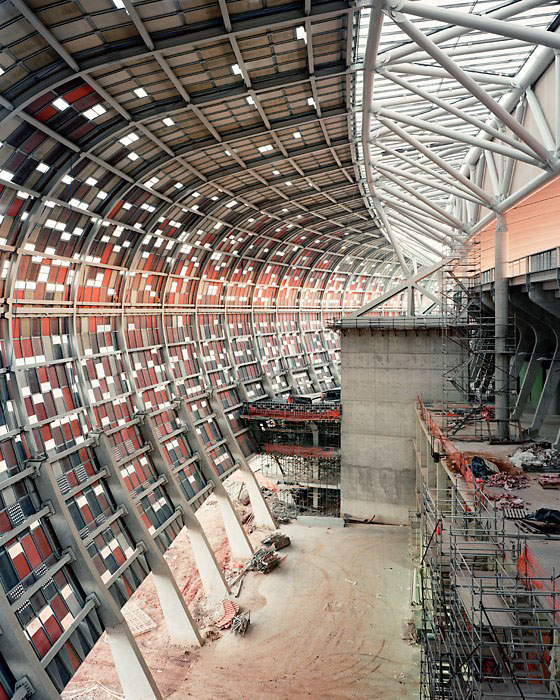
Rieder secured the commission from the architects of the soccer stadium, not only for its economic and holistic strategy, but also with its creative vision and sustainable product. In addition to its technical and aesthetic solution, the application of fibreC to the facade surpassed other international bidders with its eco-friendly qualities. fibreC is a concrete panel, reinforced with glassfibres, which enables the efficient construction of aesthetically impressive and sustainable building projects. Using authentic colours, fibreC complemented the architectural brief of creating a living surface for the soccer stadium.
Rieder is set to reach World Cup 2010 final!
More information: http://www.rieder.cc

